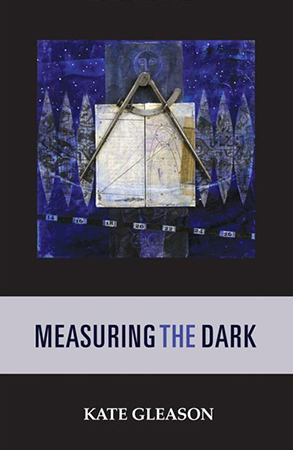A pressure front
is blowing in,
storm clouds
skimming the fields
at such a clip
it’s almost biblical,
almost enough
to believe in something
conveying them along
on a belt.
On the edge
of my orchard,
a few apple saplings,
their slender trunks
wrapped with silver tape
at the base
like the delicate ankles
of race horses.
Walking toward me:
my teenage niece
and her boyfriend,
who are just now
coming home
from the concert
in my neighbor’s
field last night,
that ruckus that kept
disrupting my sleep.
They stop to kiss
against the trunk
of a Cortland
whose full limbs bend
and brush close
to the earth,
almost breaking
under the weight
of so much sweetness.
I remember once falling
for boys like him — hooded
eyes, high cheekbones —
not big on looks
but with a certain
indefinable something
like the dark matter
of the universe
and its baffling gravity:
with more pull
than there is substance
to account for it.
It seems like only
a moment ago
that my niece
was still in grade school,
boys the furthest thing
from her mind,
eager to show me
her science project:
the galaxies drawn
as dots on a balloon
she blew up to illustrate
how the universe
is expanding,
our Milky Way
pressing into the void
on a skin growing thinner
with each new breath.
It’s hard to believe
she’s the same person,
so different now
with her shocks
of henna-ed hair,
her multiple piercings,
her blue nail polish
with metallic flecks,
the color of star clusters.
I, too, have changed,
my hips stiffer today
when I bent to pick
the last batch of spinach
from my makeshift
cold frame,
a storm door
that closes on the earth.
Last night when I kept waking,
I read a little more
from a book on Edwin Hubble
who, middle-aged like me,
began measuring the dark
and was startled
to find the galaxies
out on the rim
shifting, in his scope,
toward the red end
of the spectrum, meaning
they were pushing
into the night
much more quickly
than those close by,
the equation he worked out
for the speed of their receding
changing how we look
at physics,
becoming a new constant
with his name on it.
Hubble’s Constant,
his famous redshift,
the groundbreaking
finding of our time.
But haven’t we
always known this
in our bones,
the speed of anything
being relative
to where we stand?
Take any of us
and place us
in relation
to our childhood:
The farther
we get from it,
the faster
we seem to go.

